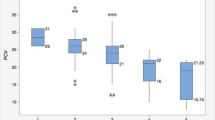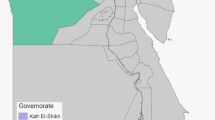Abstract
One of the most important activities in animal raising is parasite control. Since parasites share what animals eat on one hand, they have disease-causing effects on the other hand, they are parasites that must be fought. In fact, they can be responsible for the decrease in yield and can also cause death. Haemonchus contortus parasite from the Trichostrongylidae family is a blood parasite that causes anemia in sheep and goats. In this study, using the FAMACHA© card, which is widely used in the determination of anemia caused by Haemonchus contortus in the world, the color of the conjunctiva was scored in Akkaraman sheep and Hair goats raised in the Sızma district of Konya, and the relations between the score and the parasite type and density were determined. Accordingly, while no animals with 1 and 5 scores were observed in sheep, the numbers of animals with scores of 2, 3, and 4 were determined as 7.84%, 40.2%, and 52.96%, respectively. Parasite eggs belonging to the Trichostrongylidae family were observed in 96.07% of the sheep. On the other hand, no animal with score 1 or 2 was observed in goats. The numbers of animals with 3, 4, and 5 scores were determined as 6.12%, 54.08%, and 39.80%, respectively. Eimeria, the most common parasite species, was found in 68.18% of the goats and parasite eggs from the Trichostrongylidae family were observed in 17.05%. As a result, it was concluded that the card in question was a practical, easily available, and cheap tool in the detection of anemia by using the relationships between FAMACHA© card scoring and parasite loads.





Similar content being viewed by others
References
Al-Bulushi, S., Shawaf, T., Al-Hasani, A., 2017. Some hematological and biochemical parameters of different goat breeds in Sultanate of Oman “A preliminary study”. Veterinary World, 10(4), 461–466.
Anonymous 2019. Why and How To Do FAMACHA© Scoring. https://web.uri.edu/sheepngoat/files/FAMACHA-Scoring_Final2.pdf. Accession Date: 23.01.2020].
Adehanom, B., Dagnachew, D., Teklue, T., Surendra, N., 2015. Validation of the FAMACHA© eye color technique for detecting anemic sheep and goats in Jigjiga Zone of Somali Region, Eastern Ethiopia, Research Journal of Veterinary Sciences 8 (3): 61–67.
Altaş, M., Sevgili, M., Gökçen, A., Bayburs, H. C., 2006. Prevalence of gastrointestinal nematodes in sheep in the Sanliurfa region, Turkey Parasitology Journal, 30 (4): 317–321.
Anonymous, 2010. Handbook for the Control of Internal Parasites of Sheep, https://cdn.dal.ca/content/dam/dalhousie/pdf/faculty/agriculture/oacc/en/livestock/Handbook _Control_of_Parasites_of_Sheep_Dec2010.pdf, [Accession Date: 14.01.2020].
Bath, G.F., Malan, F.S., VanWyk, J.A., 1996. The FAMACHA© ovine anemia guide to assist with the control of haemonchosis. Proceedings of the 7th Annual Congress of the Livestock Health and Production Group of the South African Veterinary Association, June 5-7, 1996, Port Elizabeth, South Africa, pp: 5.
Bath, G. F.,Van Wyk, J. A, 2009. The Five Point Check© for targeted selective treatment of internal parasites in small ruminants. Small Ruminant Research, 86(1-3), 6–13.
Besier, R. B., Kahn, L. P., Sargison, N. D., Van Wyk, J. A., 2016. Diagnosis, treatment and management of Haemonchus contortus in small ruminants, In Advances in Parasitology (Vol. 93, pp. 181–238), Academic Press.
Bisset, S. A., Van Wyk, J. A., Bath, G. F., Morris, C. A., Stenson, M. O., Malan, F. S., 2001. Phenotypic and genetic relationships amongst FAMACHA© score, faecal egg count and performance data in Merino sheep exposed to Haemonchus contortus infection in South Africa, In Proceedings of the 5th International Sheep Veterinary Congress (pp. 22–25).
De Macedo, L. O., Santos, M. A. B., da Silva, N. M. M., do Rêgo Barros, G. M. M., Alves, L. C., Giannelli, A., de Carvalho, G. A., 2019. Morphological and epidemiological data on Eimeria species infecting small ruminants in Brazil, Small Ruminant Research, 171, 37–41.
Di Loria, A., Veneziano, V., Piantedosi, D., Rinaldi, L., Cortese, L., Mezzino, L., Ciaramella, P., 2009. Evaluation of the FAMACHA system for detecting the severity of anaemia in sheep from southern Italy, Veterinary parasitology, 161(1-2), 53–59.
Egbe-Nwiyi, T. N., Sherrif, G. A., Paul, B. T., 2018. Prevalence of tick-borne haemoparasitic diseases (TBHDS) and haematological changes in sheep and goats in Maiduguri abattoir. Journal of Veterinary Medicine and Animal Health, 10(1), 28–33.
Galyon, H. R., Zajac, A. M., Wright, D. L., Greiner, S. P., Bradford, H. L., 2020. Evaluating the relationship between fecal egg count, FAMACHA score, and weight in dewormed and non-dewormed Katahdin rams during a parasite challenge. Translational Animal Science, 4(4), txaa178.1–8
Glaji, Y. A., Mani, A. U., Bukar, M. M., Igbokwe, I. O., 2014. Reliability of FAMACHA© chart for the evaluation of anaemia in goats in and around Maiduguri, Sokoto Journal of Veterinary Sciences, 12(3), 9–14.
Güçlü, F., 2006. Parasitological diagnostic methods. selcuk University Faculty of Veterinary Medicine, Department of Parasitology, Konya, Turkey.
Kaplan, R. M., Burke, J. M., Terrill, T. H., Miller, J. E., Getz, W. R., Mobini, S., Vatta, A. F., 2004. Validation of the FAMACHA© eye color chart for detecting clinical anemia in sheep and goats on farms in the southern United States, Veterinary Parasitology, 123(1-2), 105–120.
Koyuncu, M., Taşkın, T., Nageye, F. İ., 2019. Effects and sustainable management of internal parasites in sheep and goats. J. Anim. Prod., 2019, 60 (2): 145–158
LeJambre, L. F., Ractliffe, L. H., Uhazy, L. S., Whitlock, J. H., 1971. Fecal egg output of lambs in relationship to Haemonchus contortus burden. International Journal for Parasitology, 1(2), pp 157–160.
Minitab, (2010). Minitab 16.1.1 for Windows. State College, PA, USA: Minitab Inc
Marques, C. A., Saraiva, L. A., Torreão, J. N., Silva, T. P., Bezerra, L. R., Edvan, R. L., Nascimento, R. R., 2018. The use of targeted selective treatments on controlling gastrointestinal nematodes in different sheep categories under grazing system, Pesquisa Veterinária Brasileira, 38(3), 470–476.
Mushonga, B. D., Habumugisha, E., Kandiwa, O., Madzingira, A., Samkange, B.E., Segwagwe I. F. J, 2018. Prevalence of Haemonchus contortus Infections in Sheep and Goats in Nyagatare District, Rwanda. Hindawi Journal of Veterinary Medicine Volume 2018, Article ID 3602081, 9 pages https://doi.org/10.1155/2018/3602081.
Notter, D. R., Burke, J. M., Miller, J. E., Morgan, J. L. M, 2017. Association between FAMACHA scores and fecal egg counts in Katahdin lambs. Journal of animal science, 95(3), 1118–1123.
O’Connor, L. J., Walkden-Brown, S. W., Kahn, L. P., 2006. Ecology of the free-living stages of major trichostrongylid parasites of sheep, Veterinary Parasitology, 142(1–2), pp 1–15
Pugh, D., Baird, A. 2012. Sheep and Goat Medicine. 2nd, Elsevier Saunders, ISBN 978-1-43772353-3.
Rinaldi, L., Veneziano, V., Cringoli, G., 2007. Dairy goat production and the importance of gastrointestinal strongyle parasitism, transactions of the Royal Society of Tropical Medicine and Hygiene, 101(8), 745–746.
Roberts, J. L., Swan, R. A., 1981. Quantitative studies of ovine haemonchosis. I. Relationship between faecal egg counts and total worm counts, Veterinary Parasitology, 8(2), pp 165–171.
Radostits, O. M., Gay, C. C., Hinchcliff, K. W., Constable, P. D., 2007. A textbook of the diseases of cattle, horses, sheep, pigs and goats, Veterinary Medicine, 10, 2045–2050.
Rodríguez, A. V., Goldberg, V., Viotti, H., Ciappesoni, G., 2015. Early detection of Haemonchus contortus infection in sheep using three different faecal occult blood tests, Open Veterinary Journal, 5(2), 90–97.
Selver, M., 2006. Haemonchus contortus’ un Kontrolünde Yeni Bir Yöntem: FAMACHA©. Türkiye Parazitoloji Dergisi, 30 (1), 46–49
Sevimli F., Kozan E., Köse M., Eser M., 2006. The prevalence of helminths according to faecal examination in sheep in Afyonkarahisar province. Veterinary Journal of Ankara University (Turkey), 53(2), 137–40.
Smith, M. C., Sherman, D. M., 2009. Goat medicine, John Wiley & Sons.
Urquhart, G. M., Armour, J., Duncan, J. L., Dunn, A. M., Jennings, F. W. 1996. Veterinary Parasitology, 2nd. ed Oxford: Blackwell Science Ltd.
Vatta, A. F., Letty, B. A., Van der Linde, M. J., Van Wijk, E. F., Hansen, J. W., Krecek, R. C. 2001. Testing for clinical anaemia caused by Haemonchus spp. in goats farmed under resource-poor conditions in South Africa using an eye colour chart developed for sheep, Veterinary Parasitology, 99(1), 1–14.
Van Wyk, J. A., Bath, G. F., 2002. The FAMACHA© system for managing haemonchosis in sheep and goats by clinically identifying individual animals for treatment. Veterinary Research, 33(5), 509–529.
Acknowledgements
We thank Prof. G. F. Bath for his support in supplying the FAMACHA© scoring cards.
Funding
This research was supported by the Scientific Research Project Coordinatorship of Selcuk University (Project No: 19401047).
Author information
Authors and Affiliations
Contributions
OS and SB designed the study. The FAMACHA© scoring were obtained by IA. Statistical analysis of the study was done by IK and YA. Feces samples taken from the animals were taken by AK and MB. All authors wrote and approved the manuscript.
Corresponding author
Ethics declarations
Informed consent
All authors have given their consent that this work is valid and represent their views of the study and have given their consent for this work to be published.
Conflict of interest
The authors declare no competing interests.
Statement of animal rights
This work did not involve the use of animal for laboratory studies. There is no violation of animal right.
Additional information
Publisher’s note
Springer Nature remains neutral with regard to jurisdictional claims in published maps and institutional affiliations.
Rights and permissions
About this article
Cite this article
Şahin, Ö., Aytekin, İ., Boztepe, S. et al. Relationships between FAMACHA© scores and parasite incidence in sheep and goats. Trop Anim Health Prod 53, 331 (2021). https://doi.org/10.1007/s11250-021-02769-1
Received:
Accepted:
Published:
DOI: https://doi.org/10.1007/s11250-021-02769-1




